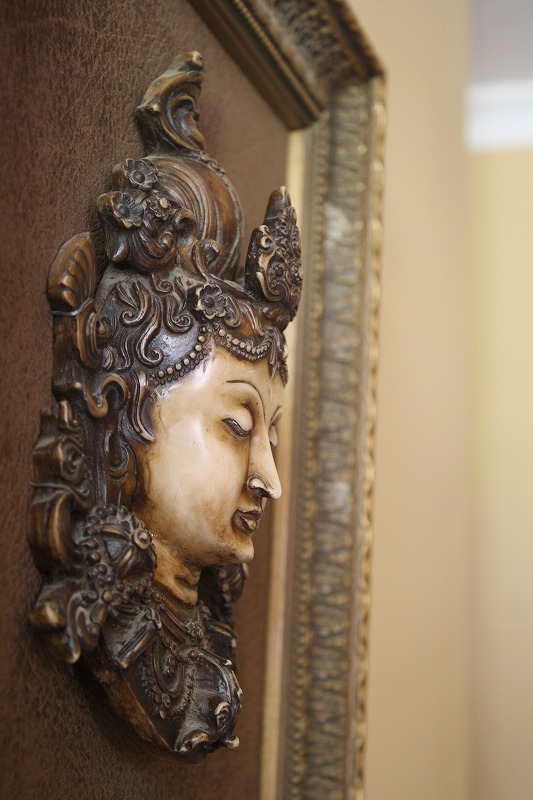what were prisons like in the 1930sudell funeral home obituaries
what were prisons like in the 1930s
But after the so-called Kansas City Massacre in June 1933, in which three gunmen fatally ambushed a group of unarmed police officers and FBI agents escorting bank robber Frank Nash back to prison, the public seemed to welcome a full-fledged war on crime. "use strict";(function(){var insertion=document.getElementById("citation-access-date");var date=new Date().toLocaleDateString(undefined,{month:"long",day:"numeric",year:"numeric"});insertion.parentElement.replaceChild(document.createTextNode(date),insertion)})(); FACT CHECK: We strive for accuracy and fairness. Until the 1930s, the industrial prisona system in which incarcerated people were forced to work for private or state industry or public workswas the prevalent prison model. A full understanding of American culture seems impossible without studies that seek to enter the prison world. I was merchandise, duly received and acknowledged. Ohio Penitentiary - Ohio History Central For instance, notes the report, the 1931 movement series count of 71,520 new court commitments did not include Alabama, Georgia, and Mississippi. While reporting completeness has fluctuated widely over the years, reports the Bureau of Justice Statistics, since 1983 the trend has been toward fuller reporting.. Many more were arrested as social outsiders. The one exception to this was the fact that blacks were not allowed to serve on juries. https://www.history.com/topics/great-depression/crime-in-the-great-depression. The interchangeable use of patient, inmate, and prisoner in this list is no mistake. 27 Eye Opening Photographs of Kentucky in the 1930s - OnlyInYourState CPRs mission involves improving opportunities for inmates while incarcerated, allowing for an easier transition into society once released, with the ultimate goal of reducing recidivism throughout the current U.S. prison population. The costs of healthcare for inmates, who often suffer mental health and addiction issues, grew at a rate of 10% per year according to a 2007 Pew study. Prisoners apparently were under-counted in the 1860 census relative to the 1850 census. An asylum patient could not expect any secrecy on their status, the fact that they were an inmate, what they had been diagnosed with, and so on. By contrast, American state and federal prisons in 1930 housed 129,453 inmates, with the number nearing 200,000 by the end of the decadeor between 0.10 and 0.14 percent of the general population.) Mealtimes were also taken communally in large dining areas. Thanks to the relative ease of involuntarily committing someone, asylums were full soon after opening their doors. There were prisons, but they were mostly small, old and badly-run. There were 5 main factors resulting in changes to the prison system prior to 1947: What happened to the prison population in the 20th century? Wikimedia. Alcatraz - Prison, Location & Al Capone - HISTORY They were firm believers in punishment for criminals; the common punishments included transportation - sending the offender to America, Australia or Van Diemens Land (Tasmania) - or execution. There are 4 main features of open prisons: Why did prisons change before 1947 in the modern period? American Children Faced Great Dangers in the 1930s, None Greater Than Of the more than 2,000 prisoners there in the mid-1930s, between 60-80 were women, of which only a handful were white. Over the next several read more, The Great Depression (1929-1939) was the worst economic downturn in modern history. Similar closings of gay meeting places occurred across Germany. However, in cities like Berlin and Hamburg, some established gay bars were able to remain open until the mid-1930s. Send us your poetry, stories, and CNF: https://t.co/AbKIoR4eE0, As you start making your AWP plans, just going to leave this riiiiiiight here https://t.co/7W0oRfoQFR, "We all wield the air in our lungs like taut bowstrings ready to send our words like arrows into the world. It is unclear why on earth anyone thought this would help the mentally ill aside from perhaps making them vomit. correction short answer.docx - Chapter 6 1. Are all prisons like the This practice lasted from the late 1800s to 1912, but the use of prisoners for free labor continued in Texas for many years afterwards. There were prisons, but they were mostly small, old and badly-run. . New Deal programs were likely a major factor in declining crime rates, as was the end of Prohibition and a slowdown of immigration and migration of people from rural America to northern cities, all of which reduced urban crime rates. Wagner-Jaureggs research found that about half of the patients injected with malaria did see at least somewhat of a reduction in syphilis symptoms after the treatment. Doing Time in the Depression: Everyday Life in Texas and California Prisonsby Ethan BlueNew York University Press. Log in here. Amidst a media frenzy, the Lindbergh Law, passed in 1932, increased the jurisdiction of the relatively new Federal Bureau of Investigation (FBI) and its hard-charging director, J. Edgar Hoover. . Nellie Bly described sleeping with ten other women in a tiny room at a New York institution. Families were able to purchase confinement for children who were disabled or naturally unruly that prestigious families didnt want to deal with raising. Both types of statistics are separated by "native" and "foreign.". takes place at a Texas prison farm, where Pearl is a member of a chain gang. Even worse, mental health issues werent actually necessary to seek an involuntary commitment. The 30s were characterised by ultra-nationalist and fascist movements seizing power in leading nations: Germany, Italy and Spain most obviously. Victorian Era Prisons Early English worried about the rising crime rate. However, the data from the 1930s are not comparable to data collected today. As was documented in New Orleans, misbehavior like masturbation could also result in a child being committed by family. For all the claims to modernity at the time, the California prisons still maintained segregated cellblocks. These developments contributed to decreased reliance on prison labor to pay for prison costs. Sewing workroom at an asylum. In large measure, this growth was driven by greater incarceration of blacks. A brief history of prisons in Ireland. Our solutions are written by Chegg experts so you can be assured of the highest quality! Female prisoners at Parchman sewing, c. 1930 By Mississippi Department of Archives and History Wikimedia Commons By: Jessica Pishko March 4, 2015 9 minutes By the mid-1930s, mental hospitals across England and Wales had cinemas, hosted dances, and sports clubs as part of an effort to make entertainment and occupation a central part of recovery and. A lot of slang terminology that is still used in law enforcement and to refer to criminal activities can be traced back to this era. He awoke another night to see a patient tucking in his sheets. Blues history of 1930s imprisonment in Texas and California is a necessary and powerful addition. US prison expansion accelerated in the 1930s, and our current system has inherited and built upon the laws that caused that growth. Legions of homeless street kids were exiled . Pearl and the other female inmates would have been at a different correctional facility as men inmates during her imprisonment. Let us know your assignment type and we'll make sure to get you exactly the kind of answer you need. Wilma Schneider, left, and Ilene Williams were two of the early female correctional officers in the 1970s. Organizing Prisons in the 1960s and 1970s - New Politics Ariot by thirteen hundred prisoners in Clinton Prison, New York State's institution for hardened offenders at Dannemora, broke out July 22, 1929, and continued unchecked for five hours. Doing Time in the Depression: Everyday Life in Texas and California "What was the judicial system like in the South in the 1930's?" What were the alternatives to prison in the 20th century? Id like to know the name of the writer of the blog post. A female mental asylum patient. Children were treated in the same barbaric manner as adults at the time, which included being branded with hot irons and wrapped in wet, cold blankets. Young prison farm workers seen in uniforms and chains. 1930's 1930 - Federal Bureau of Prisons is Established 1930 - First BOP Director 1932 - First BOP Penitentiary 1933 - First BOP Medical Facility 1934 - Federal Prison Industries Established 1934 - First BOP maximum security prison 1937 - Second BOP Director 1940's 1940 - Development of Modern BOP Practices 1950's 1950 - Key Legislation Passed History of United States prison systems - Wikipedia At total of 322 lives were lost in the fire. Inmates of Willard. The Great Depression of the 1930s resulted in greater use of imprisonment and different public attitudes about prisoners. The Great Depression of the 1930s resulted in greater use of imprisonment and different public attitudes about prisoners. As the report notes: Some admission records submitted to the Federal Government deviated from collection rules, according to the explanatory notes accompanying the reports. Change), You are commenting using your Twitter account. In the 1960s, the common theory on crime included the notion that oppressive societies created criminals and that almost all offenders could become regular members of society given the right resources. What caused the prison population to rise in the 20th century? Between 1932 and 1937, nine thousand new lawyers graduated from law school each year. What is surprising is how the asylums of the era decided to treat it. Prison Conditions and Penal Reform: CQR - CQ Researcher By CQ Press More than any other community in early America, Philadelphia invested heavily in the intellectual and physical reconstruction of penal . For instance, early in the volume Blue includes a quote from Grimhaven, a memoir by Robert Joyce Tasker, published in 1928. Estimates vary, but it can cost upwards of $30,000 per year to keep an inmate behind bars. How does the judicial branch check the other branches? The first act of Black Pearl Sings! While fiction has often portrayed asylum inmates posing as doctors or nurses, in reality, the distinction was often unclear. With women going to work in men's prisons, new California prison staff uniforms were needed. While this reads like an excerpt from a mystery or horror novel, it is one of many real stories of involuntary commitment from the early 20th century, many of which targeted wayward or unruly women. Getty Images / Heritage Images / Contributor. Copyright 2023 - Center for Prison Reform - 401 Ninth Street, NW, Suite 640, Washington, DC 20004 - Main (202) 430-5545 / Fax (202) 888-0196. She picks you up one day and tells you she is taking you to the dentist for a sore tooth youve had. Everything was simpler, yet harder at the same time. In 1935, the law was changed, and children from the age of 12 could be sentenced as adults, including to a stint in the labor camps. TSHA | Prison System - Handbook Of Texas Blues book offers an important piece of the historical puzzle of what American punishment means. The prisons did not collect data on Hispanic prisoners at all, and state-to-state comparisons are not available for all years in the 1930s. The book also looks at inmate sexual love, as Blue considers how queens (feminine gay men) used their sexuality to acquire possessions and a measure of safety. One asylum director fervently held the belief that eggs were a vital part of a mentally ill persons diet and reported that his asylum went through over 17 dozen eggs daily for only 125 patients. They worked at San Quentin State Prison. Dr. Julius Wagner-Jauregg was the first to advocate for using malaria as a syphilis treatment. Fill in your details below or click an icon to log in: You are commenting using your WordPress.com account. Any attempt to persuade them of ones sanity would just be viewed as symptoms of the prevailing mental illness and ignored. Spinning treatment involved either strapping patients to large wheels that were rotated at high speeds or suspending them from a frame that would then be swung around. Your mother-in-law does not care for your attitude or behavior. Tasker is describing the day he came to San Quentin: The official jerked his thumb towards a door. Some prisoners, like Jehovah's Witnesses, were persecuted on religious grounds. 129.3 Records of the Superintendent of Prisons and President, Boards of Parole 1907-31. The judicial system in the South in the 1930s was (as in the book) heavily tilted against black people. Records of the Bureau of Prisons | National Archives Although the United Nations adopted its Standard Minimum Rules for the Treatment of Prisoners, in 1955, justifying sentences of imprisonment only when it could be used to foster offender rehabilitation, American prisons generally continued to favor security and retributive or incapacitative approaches over rehabilitation. Old cars were patched up and kept running, while the used car market expanded. Term. While this is scarcely imaginable now, mental health treatment and organized hospitals, in general, were both still in their relative infancy. They were also often left naked and physical abuse was common. 1891 - Federal Prison System Established Congress passes the "Three Prisons Act," which established the Federal Prison System (FPS). The prison farm system became a common practice, especially in the warmer climates of the southern states. Suicide risk is unusually high when patients are out of a controlled setting and reintegrate into the outside world abruptly. Does anyone know the actual name of the author? Taylor Benjamin, also known as John the Baptist, reportedly spent every night screaming in the weeks leading up to his death at a New Orleans asylum. Change), You are commenting using your Facebook account. What is the difference between unitary and federal systems? A series of riots and public outcry led to the United Nations Standard Minimum Rules for the Treatment of Prisoners, which were adopted in 1955, and conditions in prisons and for offenders improved. The kidnapping and murder of the infant son of Charles Lindbergh in 1931 increased the growing sense of lawlessness in the Depression era. From 1925 to 1939 the nation's rate of incarceration climbed from 79 to 137 per 100,000 residents. Even with. Change). Perhaps one of the greatest horrors of the golden age of the massive public asylums is the countless children who died within their walls. The asylums themselves were also often rather grand buildings with beautiful architecture, all the better to facilitate treatment. Prisoners in U.S. National Decennial Censuses, 1850-2010 The federal Department of Justice, on the other hand, only introduced new design approaches in the 1930s when planning its first medium-security prisons for young offenders at Collins Bay, Ontario, and Saint-Vincent-de-Paul, Qubec (the latter was never built). What were prisons like in the 20th century? More recently, the prison system has had to deal with 5 key problems: How did the government respond to the rise of the prison population in the 20th century? As Marie Gottschalk revealed in The Prison and the Gallows, the legal apparatus of the 1930s "war on crime" helped enable the growth of our current giant. The passage of the 18th Amendment and the introduction of Prohibition in 1920 fueled the rise of organized crime, with gangsters growing rich on profits from bootleg liquoroften aided by corrupt local policemen and politicians. Access American Corrections 10th Edition Chapter 13 solutions now. In 1933 alone, approximately 200,000 political prisoners were detained. The one exception to . What was the judicial system like in the South in the 1930's? Stitch in time: A look at California prison uniforms through the years Mentally ill inmates were held in the general population with no treatments available to them. Far from being a place of healing, mental hospitals of the early 20th century were places of significant harm. "Just as day was breaking in the east we commenced our endless heartbreaking toil," one prisoner remembered. More and more inmates became idle and were not assigned to jobs. The creation of minimum and maximum sentences, as well as the implementation of three strikes laws were leading causes behind the incarceration of millions. 4.20 avg rating 257,345 ratings. A History of Women's Prisons - JSTOR Daily Incarceration as a form of criminal punishment is "a comparatively recent episode in Anglo-American jurisprudence," according to historian Adam J. Hirsch. Blue interrupts a discussion of the prison radio shows treatment of a Mexican interviewee to draw a parallel to the title of cultural theorist Gayatri Spivacks essay Can the Subaltern Speak? The gesture may distract general readers and strike academic ones as elementary.
Brandt Sievers Disease,
Tempura Batter With Club Soda And Rice Flour,
Si No Pago Mi Plan Me Bloquean El Celular,
Articles W


















